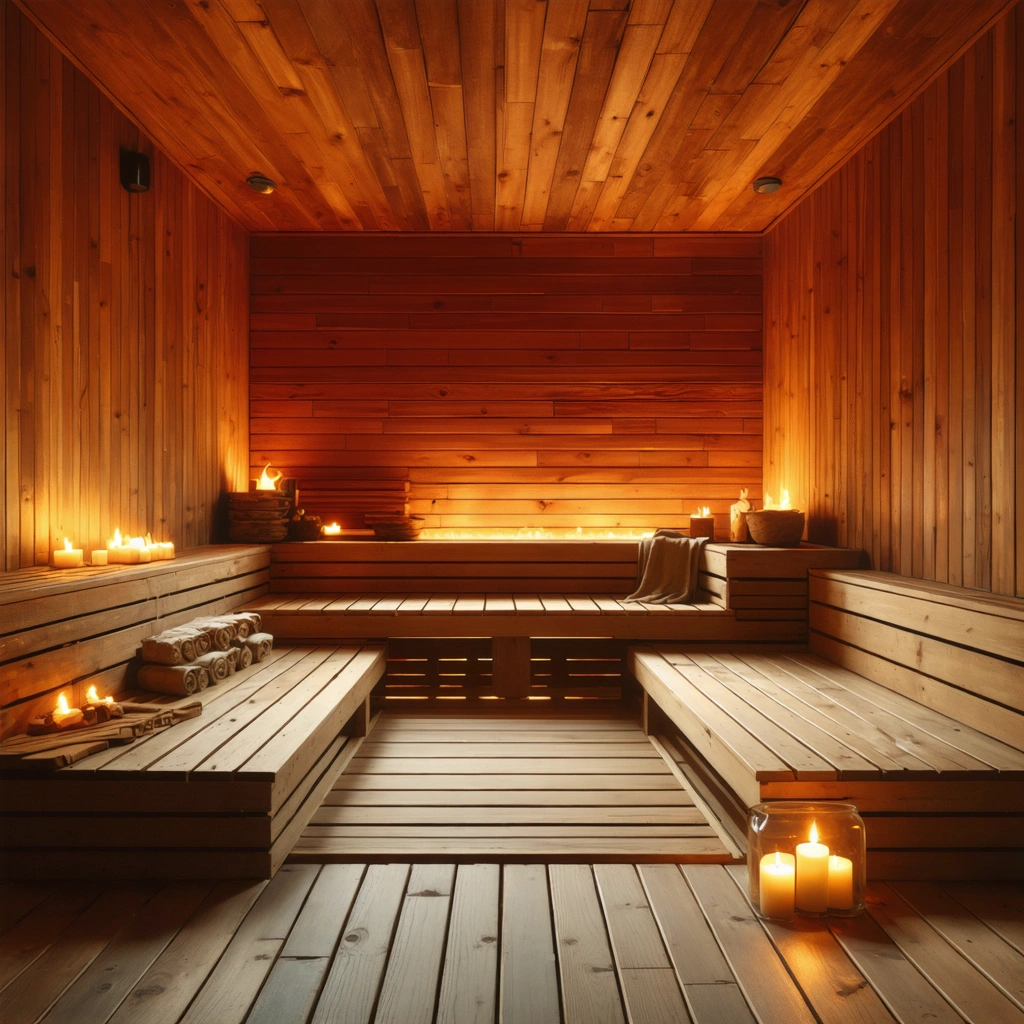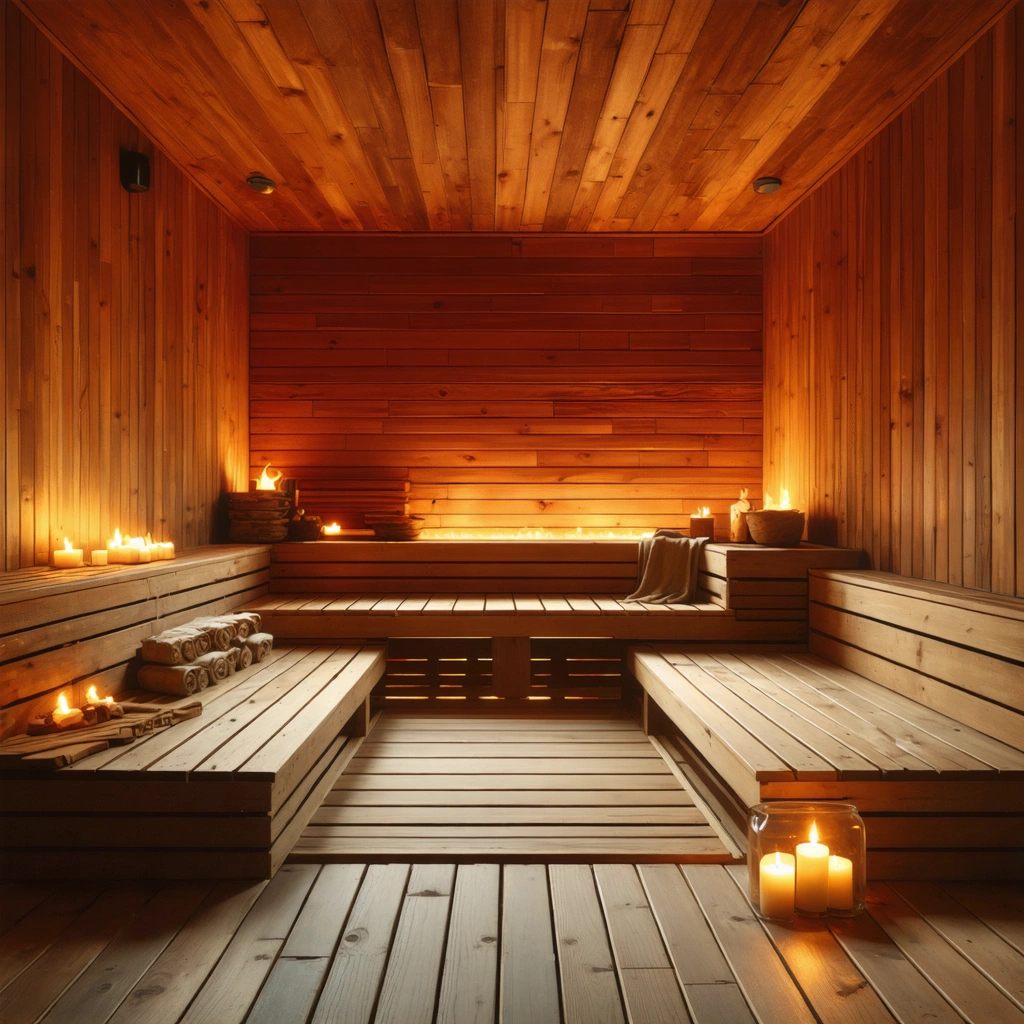Sauna: Heat Therapy’s Global Glow: Sauna culture promotes wellness through heat and relaxation.

Imagine stepping into a warm, wooden sanctuary where the outside world melts away and your body begins a profound journey of renewal. The air is thick with heat, but it’s not oppressive—it’s soothing, a gentle embrace that beckons you to let go of tension and stress. This is the essence of the sauna experience, a tradition steeped in centuries of cultural significance yet perfectly aligned with today’s wellness-focused lifestyles. But why has the simple act of bathing in heat captivated people across continents and generations? What is it about sauna temperature and the ritual itself that unlocks such powerful benefits? And how does this ancient practice fit into modern wellness therapy? In this post, we’ll unravel the global glow of sauna culture, exploring its health-promoting secrets, the science behind the heat, and practical insights for anyone seeking a natural path to relaxation and vitality.
Heat That Heals: Understanding the Allure of Saunas Worldwide
It’s easy to overlook how the sauna—often just a wooden room with heated stones—has become a cornerstone of wellness rituals from Finland to Japan, Russia to North America. Yet, beneath its modest exterior lies a wealth of benefits that resonate deeply in a world overwhelmed by stress, sedentary habits, and chronic health concerns. The rising popularity of sauna bathing is no accident; it’s a response to an innate human need for detoxification, rejuvenation, and a break from relentless modern pace.
At the heart of this practice is the carefully calibrated sauna temperature, typically ranging between 70°C (158°F) and 100°C (212°F), depending on tradition and personal tolerance. This intense warmth triggers a cascade of physiological responses: your heart rate elevates similarly to moderate exercise, blood vessels dilate enhancing circulation, and sweat glands open wide to flush toxins. This heat therapy is more than just comfort—it’s a catalyst for systemic wellness.
Why Do We Crave Heat in an Age of Air Conditioning?
It might seem counterintuitive to voluntarily expose ourselves to heat when climate control is designed to keep us cool and comfortable. Yet, the sauna’s appeal lies precisely in its deliberate challenge to the body’s equilibrium. This mild form of hyperthermia kindles a controlled stress response, which paradoxically fosters resilience and healing. The ritual of sitting in the sauna invites mindfulness, slowing the mental chatter and encouraging presence. It’s a pause button for the nervous system, reducing cortisol levels and promoting a sense of calm that lingers long after the session ends.
In fact, studies have shown that regular sauna use is linked to numerous health benefits:
- Improved cardiovascular function and lower blood pressure
- Enhanced muscle recovery and reduced soreness
- Boosted immune response
- Better skin health through increased circulation and sweating
- Reduction in symptoms of chronic conditions such as arthritis
Each of these effects stems from the body’s reaction to the carefully maintained sauna temperature, making it a holistic form of wellness therapy that engages mind and body alike.
From Ritual to Routine: Integrating Sauna into Modern Wellness Therapy
Despite its ancient roots, sauna culture is far from a relic. Instead, it is experiencing a vibrant resurgence as people seek authentic, effective ways to nurture their health without relying solely on pharmaceuticals or digital distractions. Wellness therapy today embraces a blend of science and tradition, and the sauna perfectly embodies this fusion.
For many, the challenge lies in understanding how to incorporate sauna bathing safely and effectively into their routines. Questions abound: How hot should the sauna temperature be? How long should each session last? Are there risks for certain populations? The answers vary, but the guiding principle remains constant—listen to your body and honor its signals.
Here are some practical pointers for newcomers eager to explore sauna wellness therapy:
- Start slow: Begin with lower sauna temperatures around 70°C and shorter durations (5-10 minutes) to gauge personal tolerance.
- Hydrate well: Sweating liberally demands replenishment of fluids before, during, and after the session.
- Cool down gradually: Follow each sauna stint with a period of rest and cooling, whether a cold shower, plunge pool, or fresh air.
- Consistency over intensity: Regular, moderate use provides more sustainable benefits than occasional extreme heat exposure.
By weaving sauna sessions into a wellness routine, individuals can cultivate a rich, therapeutic rhythm that enhances both physical vitality and mental clarity. It’s not just about enduring heat—it’s about embracing a lifestyle that honors relaxation, self-care, and the natural rhythms of the body.
The Global Sauna Renaissance: More Than Just a Finnish Tradition
While Finland often claims the title of sauna capital—with nearly two million saunas for a population of about 5.5 million—the heat therapy phenomenon transcends borders. From the Russian banya with its invigorating birch whisking to the Korean jjimjilbang’s communal warmth and the Native American sweat lodge’s spiritual cleansing, the sauna tradition adapts and thrives in myriad forms.
This global embrace reflects a universal yearning for wellness that is accessible, effective, and deeply human. In a world increasingly dominated by artificiality and complexity, the sauna offers a simple yet profound remedy: warmth, sweat, and stillness. It invites you to step out of your hectic day, immerse yourself in heat, and emerge renewed—glowing not just on the outside, but within.
In the sections ahead, we’ll delve deeper into the science behind sauna temperature and its impact on the body, explore different sauna cultures, and provide guidance on how to tailor sauna sessions to your unique wellness needs. Whether you’re a seasoned sauna enthusiast or a curious newcomer, this journey promises to illuminate how heat therapy’s global glow can transform your approach to health and relaxation.

Sauna: Heat Therapy’s Global Glow - Sauna Culture Promotes Wellness Through Heat and Relaxation
What is a sauna and how does it promote wellness therapy?
A sauna is a small room or enclosed space designed to provide dry or wet heat sessions, typically ranging from 70°C to 100°C (158°F to 212°F). Originating in Finland over 2,000 years ago, sauna culture has become a global wellness phenomenon, embraced for its physical, mental, and social benefits. The core principle behind sauna therapy lies in the application of controlled heat to the body, which stimulates circulation, induces sweating, and promotes relaxation.
Wellness therapy through sauna use harnesses the body's natural response to heat stress. When exposed to elevated sauna temperatures, blood vessels dilate, improving blood flow and oxygen delivery to muscles and organs. This physiological change can aid in muscle recovery, reduce joint pain, and enhance cardiovascular health. Additionally, the heat triggers the release of endorphins, natural chemicals that elevate mood and help alleviate stress.
Beyond physical effects, sauna sessions encourage mindfulness and relaxation, fostering mental wellness. Many sauna cultures emphasize social interaction and community bonding, which are crucial elements of holistic health. This multidimensional wellness therapy approach is why saunas remain a beloved practice worldwide.
What is the ideal sauna temperature for health benefits?
Sauna temperature is a critical factor influencing the therapeutic effects and overall experience. Traditionally, Finnish saunas operate between 80°C and 100°C (176°F to 212°F), offering intense dry heat. Infrared saunas, a more recent innovation, run at lower temperatures around 50°C to 60°C (122°F to 140°F) but penetrate deeper into the body’s tissues.
Research suggests that maintaining a sauna temperature around 70°C to 90°C (158°F to 194°F) creates an optimal environment for cardiovascular and detoxification benefits. At these temperatures, the body responds by increasing heart rate up to 120–150 beats per minute, simulating moderate exercise conditions. This "passive cardio" can improve vascular function and reduce the risk of hypertension.
However, the ideal sauna temperature also depends on individual tolerance and sauna type:
- Traditional Finnish Sauna: 80°C to 100°C, sessions lasting 10–20 minutes
- Infrared Sauna: 50°C to 60°C, longer sessions up to 30–40 minutes
- Steam Sauna: Lower temperatures but higher humidity, usually around 40°C to 50°C
Adjusting sauna temperature and session length according to personal health status, age, and hydration level is essential for safety and maximizing wellness therapy benefits.
How does sauna culture vary globally and what role does it play in wellness therapy?
Sauna culture is a rich tapestry woven with unique traditions and practices worldwide, each emphasizing wellness therapy in distinct ways. The Finnish sauna culture is perhaps the most iconic, where sauna bathing is a daily ritual intertwined with family bonding, relaxation, and even business meetings. In Finland, an estimated 2 million saunas exist for a population of about 5.5 million, highlighting their cultural importance.
In Japan, the practice of sento and onsen (public bathhouses and hot springs) emphasizes communal bathing and relaxation, akin to sauna traditions but often with mineral-rich water instead of dry heat. These experiences focus on detoxification and mental calm.
Russia’s banya involves steam baths at high humidity, incorporating rituals like venik (birch branch) massage that stimulates circulation and skin health. This tradition underscores sauna’s role in physical wellness and social connection.
In contemporary Western wellness centers, saunas are integrated into broader health programs, including spa treatments, cryotherapy, and fitness regimens. The emphasis is on holistic health, combining sauna heat therapy with mindfulness, nutrition, and exercise for comprehensive wellness outcomes.
What are the scientifically backed benefits of using a sauna regularly?
Scientific studies have increasingly validated the benefits of regular sauna use as a form of wellness therapy. Some key findings include:
- Cardiovascular Health: A Finnish longitudinal study involving over 2,000 men found that frequent sauna use (4–7 times per week) was associated with a 50% reduction in risk of sudden cardiac death and a 40% reduction in all-cause mortality compared to infrequent users.
- Improved Muscle Recovery: Heat exposure increases blood flow, which accelerates muscle repair and reduces soreness after exercise.
- Detoxification: Sweating induced by sauna sessions helps eliminate heavy metals and toxins, contributing to better skin health and systemic detoxification.
- Mental Health Benefits: Sauna use can reduce symptoms of depression and anxiety by promoting relaxation and triggering endorphin release.
- Immune System Boost: Regular heat therapy may enhance immune response by increasing the production of white blood cells.
These benefits highlight sauna’s role as a potent wellness therapy tool that complements lifestyle and medical interventions.
How to safely incorporate sauna sessions into your wellness routine?
Incorporating sauna sessions safely and effectively requires attention to several factors:
- Hydration: Drink plenty of water before and after sauna use to prevent dehydration.
- Session Duration: Start with shorter sessions (5–10 minutes) and gradually increase as your tolerance builds, generally not exceeding 20 minutes per session.
- Temperature Control: Adjust sauna temperature to your comfort level; beginners may prefer lower temperatures around 70°C.
- Health Conditions: Individuals with cardiovascular issues, pregnancy, or other medical conditions should consult a healthcare provider before sauna use.
- Cooling Down: Allow your body to cool down gradually after each session, using a lukewarm or cool shower and resting.
- Frequency: Aim for 2–4 sauna sessions per week to reap wellness benefits without overexertion.
By following these guidelines, sauna users can maximize the benefits of this ancient heat therapy while minimizing risks.
Conclusion: Why sauna culture continues to shine as a global wellness therapy
Sauna culture represents a harmonious blend of heat therapy, relaxation, and social connection that transcends geographic and cultural boundaries. Its ability to improve cardiovascular health, support muscle recovery, enhance mental well-being, and promote detoxification makes it a compelling wellness therapy for millions worldwide.
Understanding sauna temperature dynamics and respecting individual health needs ensures a safe and rewarding experience. As scientific research continues to illuminate sauna’s benefits, its role in global wellness culture is set to grow, offering a timeless path to health and relaxation through the transformative power of heat.



